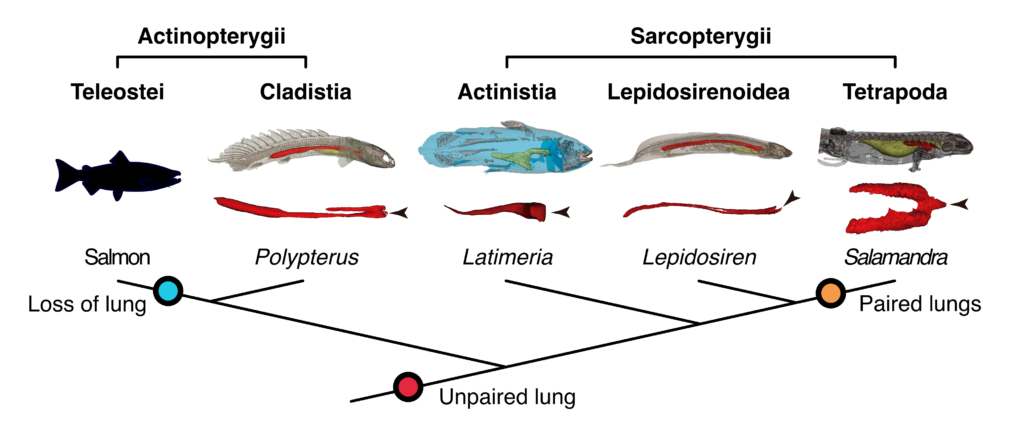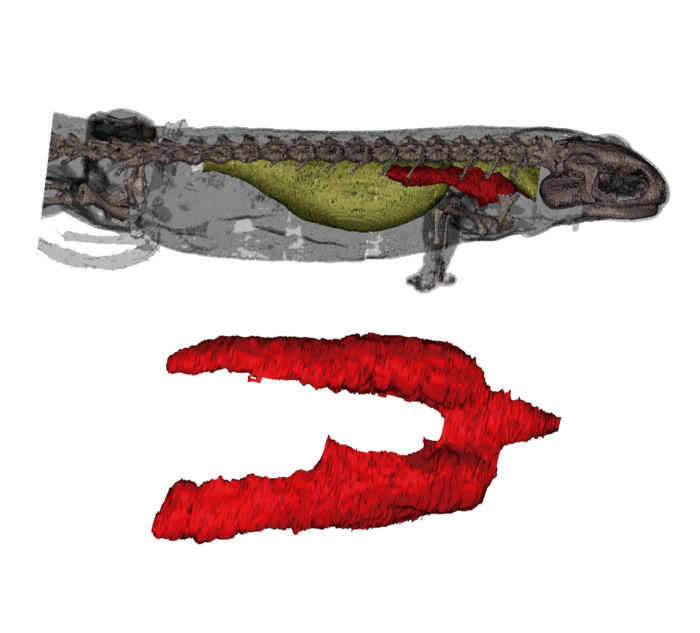Worms, arthropods, vertebrates: all terrestrial fauna has an aquatic origin. As far as vertebrates are concerned, including us humans, the water-to-land transition began about 400 million years ago. It is among the sarcopterygians (aquatic vertebrates with lobed fins, as opposed to the ray-finned actinopterygian fishes) that limbs and other innovations were developed to allow for some vertebrates to explore life on land. The development of lungs, which gave them the ability to breathe outside the water, is one of the most important adaptations in this transition from water to land.
Most terrestrial vertebrates, including us, have two lungs located on either side of their chest. The lungs extract oxygen from the atmosphere and transfer it to the bloodstream in exchange for carbon dioxide that is then exhaled into the atmosphere. The origin and evolution of this important organ, however, remain poorly understood. This is largely due to the fact that lung tissues are extremely labile and therefore leave an extremely scarce fossil record, so it is impossible to use fossils to reconstruct the evolutionary history of the lungs.
In an article published today in the journal eLife, I helped an international team of Brazilian and Japanese biologists and paleontologists to study the development of the lungs in four extant species of aquatic “bony fish” that illustrate the early stages of the water-land transition, as well as in a terrestrial salamander. We used high resolution synchrotron X-ray microtomography to describe, in three dimensions, how their lungs changed shape during development from embryos to adults. We show that the lungs of vertebrates started out as a single organ, which became truly paired later in evolution once vertebrates started developing limbs. This anatomical adaptation increased the surface area available for the exchanging oxygen and carbon dioxide, allowing vertebrates to breathe more easily on land.

These findings provide insight into the origin of the lung and its evolution into a paired structure in terrestrial vertebrates: a key innovation that allowed vertebrates to fully adapt to breathing above water, and whose importance may also explain why the water-to-land transition occurred only happened once over the course of evolution.
Reference: Cupello C., Hirasawa T., Tatsumi N., Yabumoto Y., Gueriau P., Isogai S., Matsumoto R., Saruwatari T., King A., Hoshino M., Uesugi K., Okabe M. & Brito P.M. 2022. Lung evolution in vertebrates and the water-to-land transition. eLife 11: e77156. Find the article (Open Access) here
